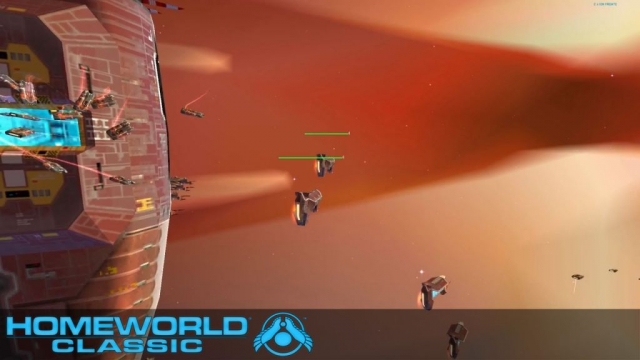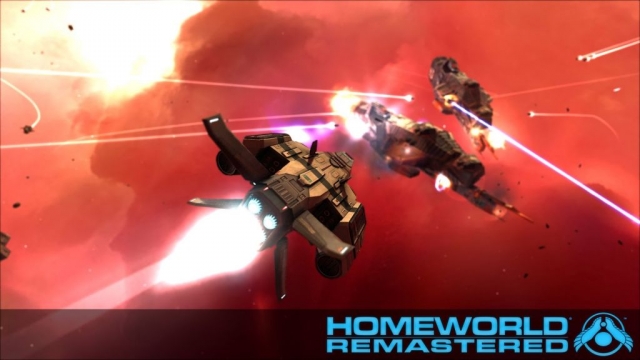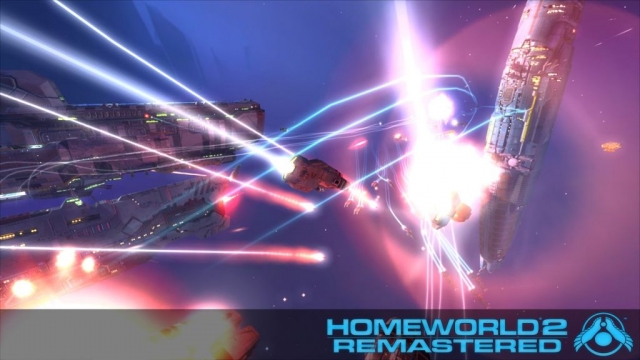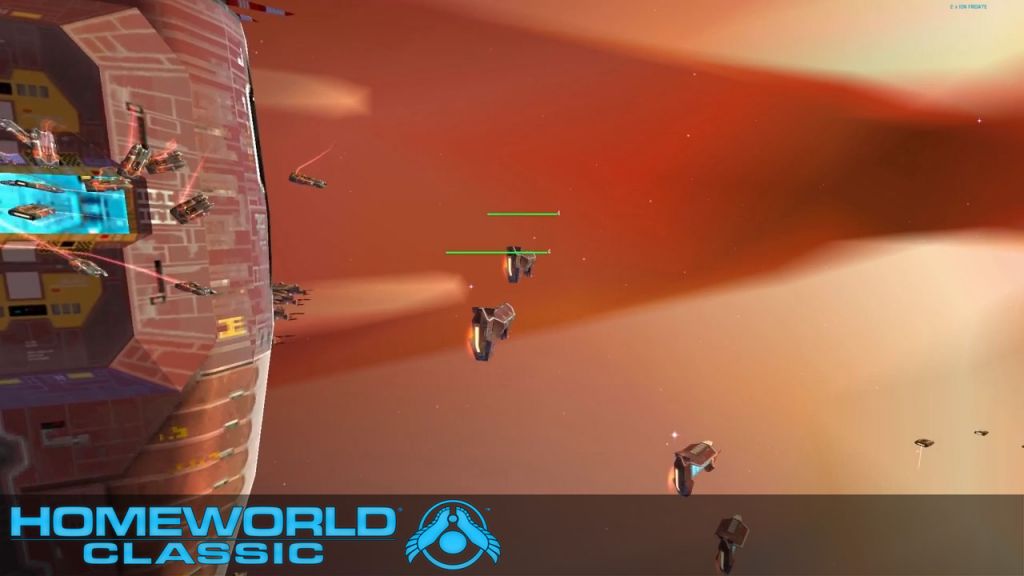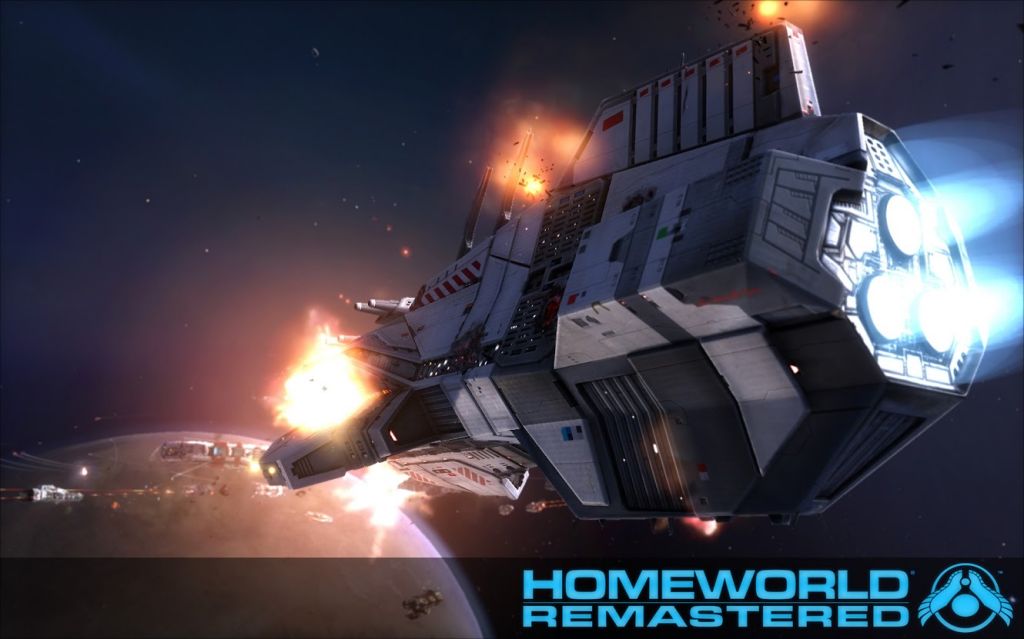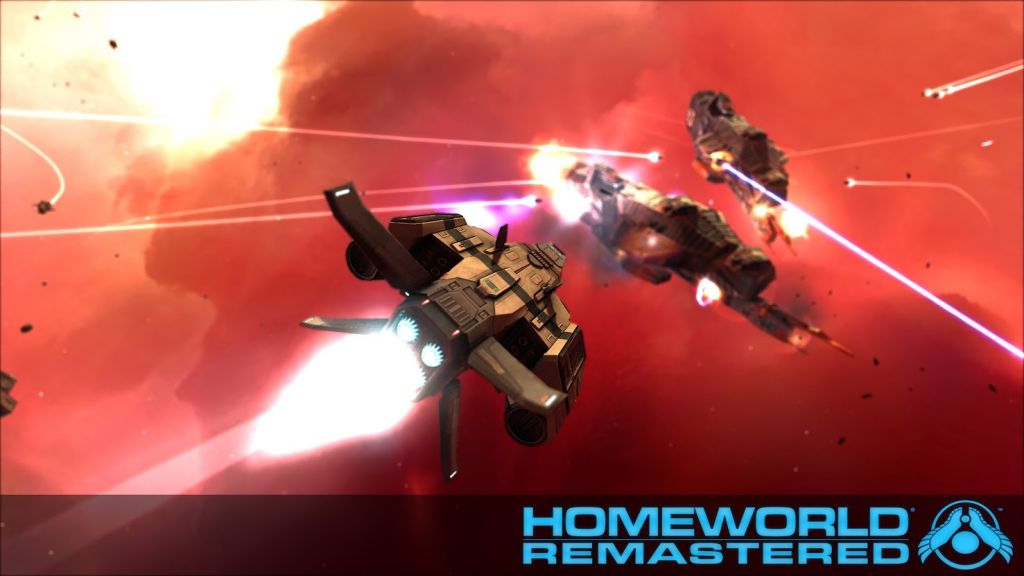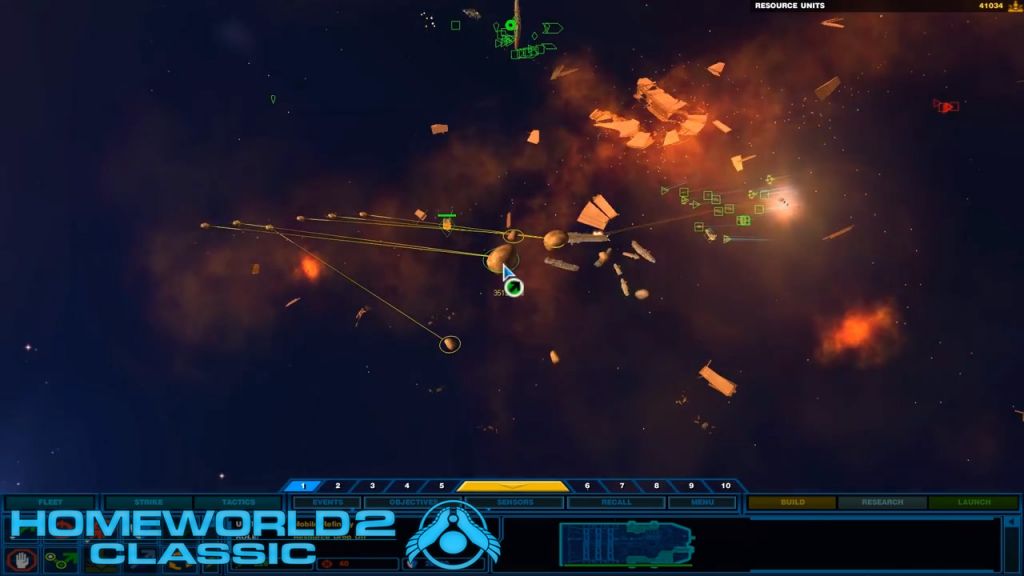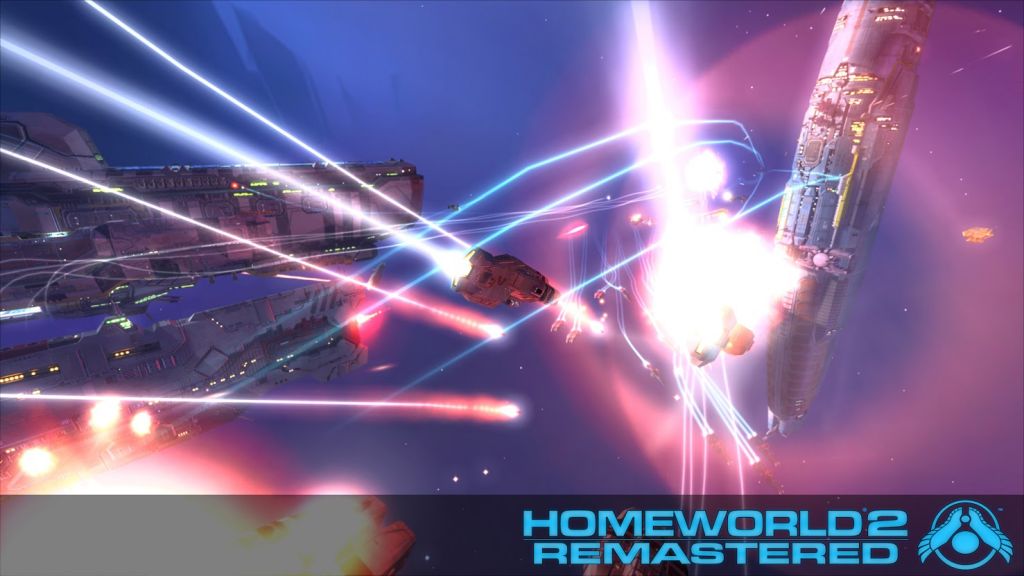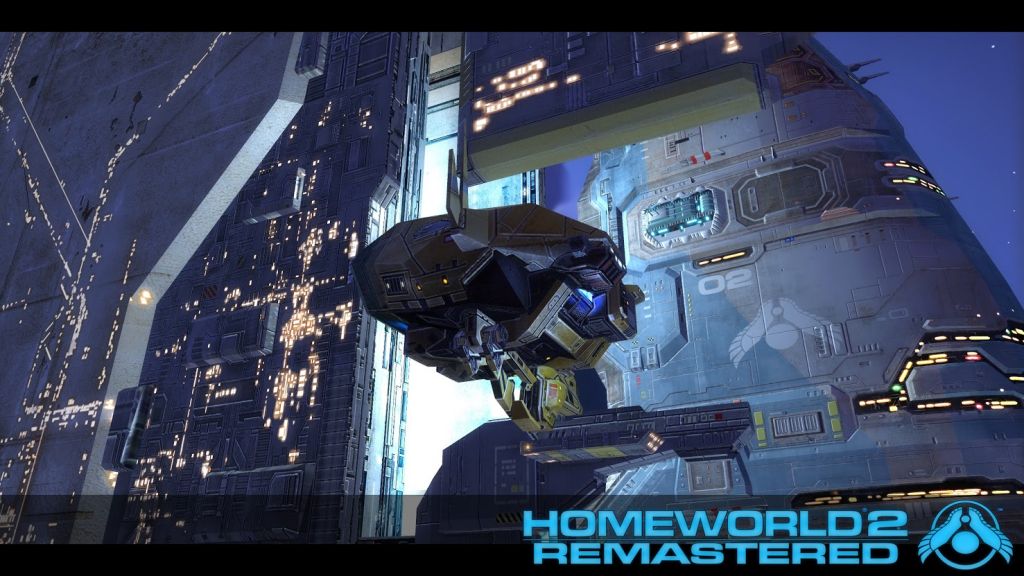Homeworld Remastered Collection
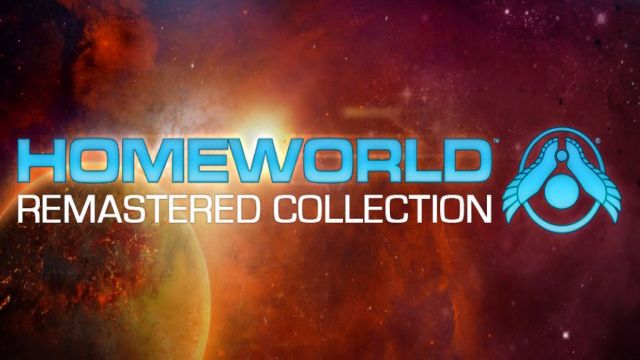
The Good: Space looks amazing! Gameplay holds up great after all these years. Multiplayer!
The Bad: 3-D controls a little clunky. Unit balance off. Single player missions a mixed bag.
The Ugly: AI is iffy at times.
As a game reviewer, I play a lot of videogames. That’s probably not a surprise to any of you, but stick with me for a moment because I’m going somewhere with this, and like many of my insights, it’s brilliant. So I play a lot of videogames. How many, you might ask? Just to throw some numbers at it, let’s say I review a game every other week, which is probably a fair guess. That would be 26 games a year, plus I play some games for myself that I’m not reviewing – call it an even 30. So, and here’s the kicker, since the original Homeworld came out in 1999 (and I’ve been writing reviews for Game-Over.com nearly that entire time), I’ve played something in the neighborhood of 450 games. Wow, I’m kind of queasy just thinking about it. If instead of playing all those games I had focused on something constructive like curing cancer, I’d probably have that sucker licked by now. Sorry about that, humanity. Anyhoo, as you can probably guess, out of those 450 or more games, many of them are not particularly memorable – probably most. I bet I can’t even name 75% of them. More interestingly, the number of games in that list that I still think of fondly, that I still reminisce about as a great game even after all these years, that’s a really small number. That really small number includes Homeworld without a doubt.
In general I’m not a big fan of revamping old games and re-releasing them with a little jazzed up graphics like it’s a whole new game, but back in 1999, Homeworld was so far ahead of its time that even by today’s standards it is still a better than average game. It was AFAIK the first RTS to feature a fully 3-D space map, and the maps were huge. You could zoom in on any single space ship nearly close enough to see the rivets in the hull, and pull back until gigantic capital ships were reduced to a single pixel. Battles could encompass something like 200 ships, and was fast enough to be exciting while at the same time slow enough to allow for some strategic adjustment along the way. Ships span the gamut from tiny fighters and scouts up to destroyers and aircraft carriers and they have realistic roles in the rock-paper-scissors of battle. Capital ships are good for hammering on other capital ships, but are nearly useless against smaller craft like fighters. Ships can form complex flight formations. I must confess that I’m not sure this has an actual strategic value, but they make for some amazing cinematic sequences.
All this great combat is not without some balance issues. Salvage ships are both pretty cheap and capture enemy ships the instant they dock. You can build, say, twelve of them and approach a capital ship after its fighter escort has been picked away. Sure, some will be destroyed, but enough will dock to capture the ship. The AI has little idea what to do about this strategy and during the single player campaign it fell for this a number of times allowing me to build up a fair stable of big vessels far in advance of the single player campaign plans. In fact the AI as a whole seems a little out of its depth, often launching attacks that have no change of success and fruitlessly wasting units. It reminds me of the old arrow traps that enemy units used to fall for in Warcraft. While they were busily remastering the graphics, perhaps the AI should have gotten a refresh as well. Furthermore, speaking of balance issues, recycling ships, while it doesn’t give you a 100% refund, does give you a high enough one to make it very worthwhile to regularly scrap your fleet. Probing your enemy with a cheap, disposable ship can show you the mix of their ships, allowing you to then build the perfect fleet to destroy it with minimal losses on your part. This strategy makes the single player campaign very easy for the most part.
This issue is exacerbated by the way the game plays with persistence. Resources collected and ships built in one mission are carried forward into the next one. What this means is that if you have one really disastrous mission you may not have enough ships/resources to get through subsequent missions. You can, in effect, dig yourself a hole so deep you can’t climb out, though you can always load up an earlier save and try again. The converse however is also true – capturing a destroyer early in the single player campaign or in general just being really thrifty with your ships and patient in combat can skew the subsequent missions very easy. Some of the missions turn into cakewalks that take less than two minutes. I’ll add that I personally love the persistence thing, and wonder why so few RTS games across the years have made use of it (at this moment in my vast history of gaming, the only other one that does that comes to mind is Earth 2140).
The single player campaign of Homeworld (which I remember much better than that of Homeworld 2) is completely unchanged. Some of these missions are classic and cover the typical kinds of objectives like escort and wipe out your enemy and investigate mysterious signals or radar returns. Some of them, however, are real dogs (pun intended for those familiar with the missions). One involves traversing an asteroid field, and trying to figure out the trajectory of incoming asteroids, which ones are going to hit your ships, and manually targeting them first (because your ships auto-attack feature doesn’t register incoming asteroids). Another involves crossing a field with high radiation (ships take automatic and continual damage) while avoiding mines and being harassed by small enemy fleets swarming out of asteroid fields.
Gearbox has done a fantastic job with the new game engine and the results are nothing short of stunning. Space is filled with stars and nebula and asteroids, a palette of colors and hues that is pure eye candy. You can zoom in and watch ships swoop and fire weapons, trailing engine glow and exploding in a ball of flames (note that tactically this isn’t a very useful view, but it sure is cinematic). Capital ships go up like the death star, in a blast of light and particles as bright as a supernova. I understand it will support 4k resolution, not that I have a monitor that can take advantage of that. Complementing the graphics is a musical score and voice work as good as I’ve ever heard.
Together with the remastered Homeworld and Homeworld 2, the package also includes both of those games in their original glory (modified to operate in modern operating systems and on modern hardware). Beyond pulling some of the control features of Homeworld 2 back into Homeworld 1, the gameplay of the remastered versions is as near as I can tell identical to the earlier ones. I’m frankly not sure who, with the splendidly remastered games in front of them, is going to want to play these games in their old form except perhaps as a brief burst of nostalgia. Still, it’s nice to see them included and makes the whole package feel very satisfying.
Reviewed By: Phil Soletsky
Publisher: Gearbox Software
Rating: 85%
——————————————————————————–
This review is based on a digital copy of Homeworld Remastered for the PC provided by Gearbox Software.
 Game Over Online
Game Over Online